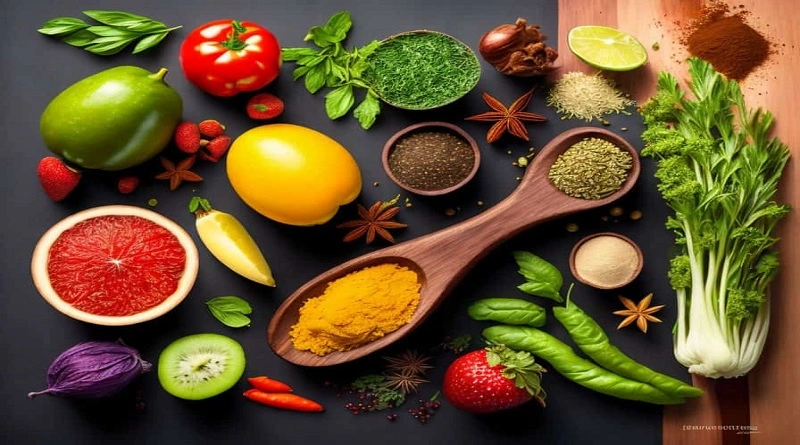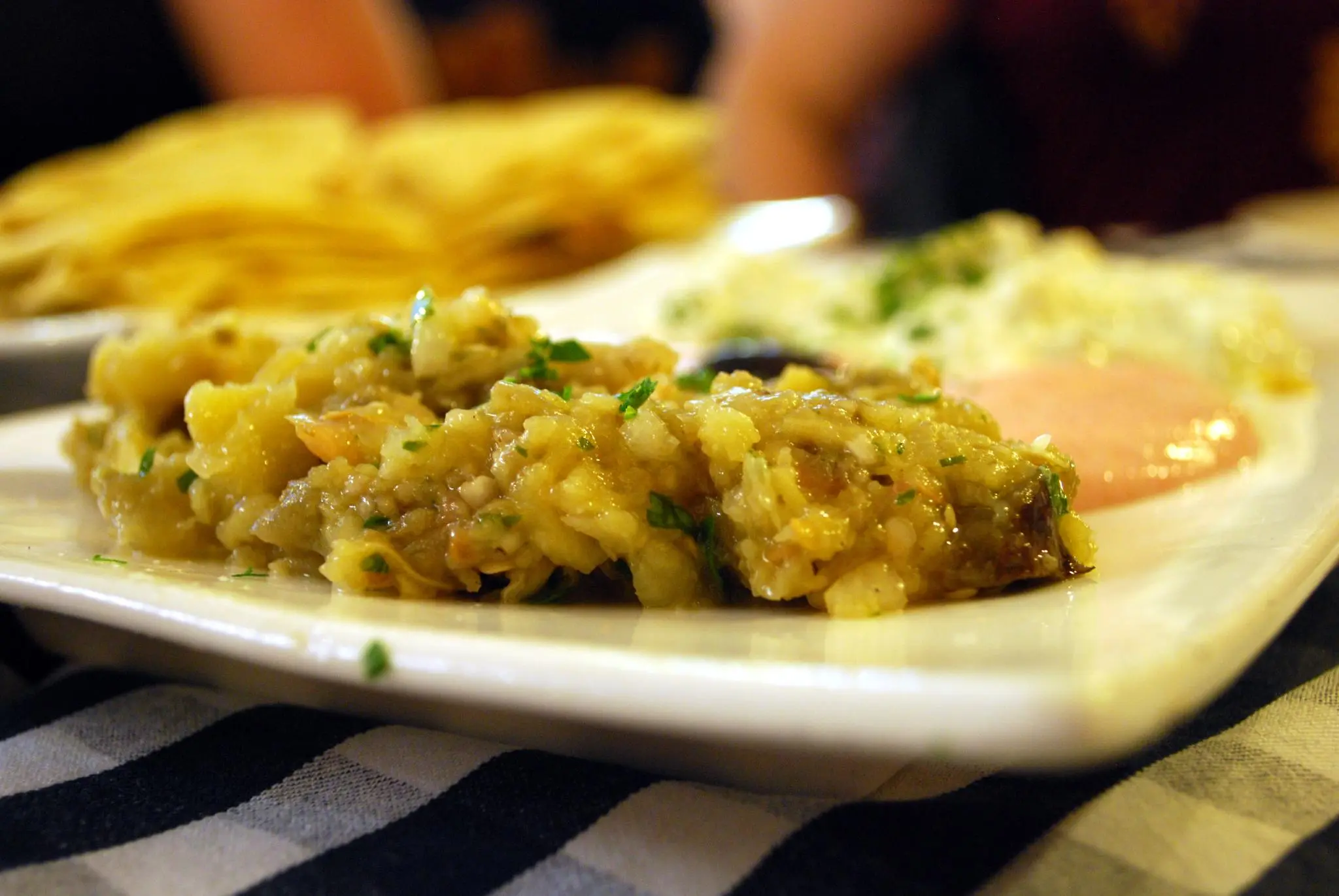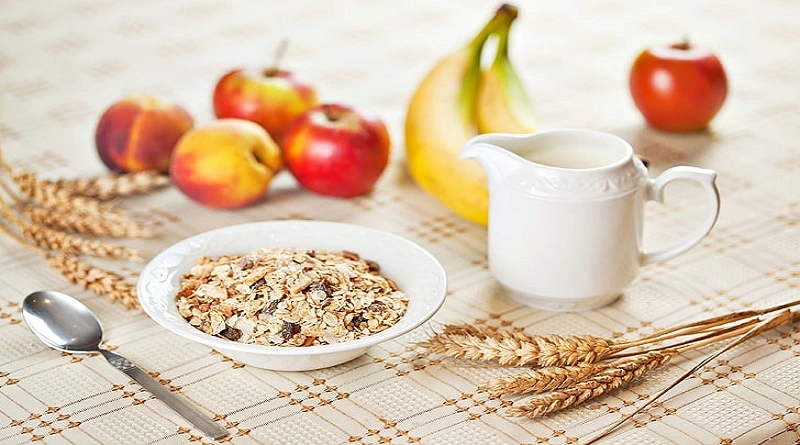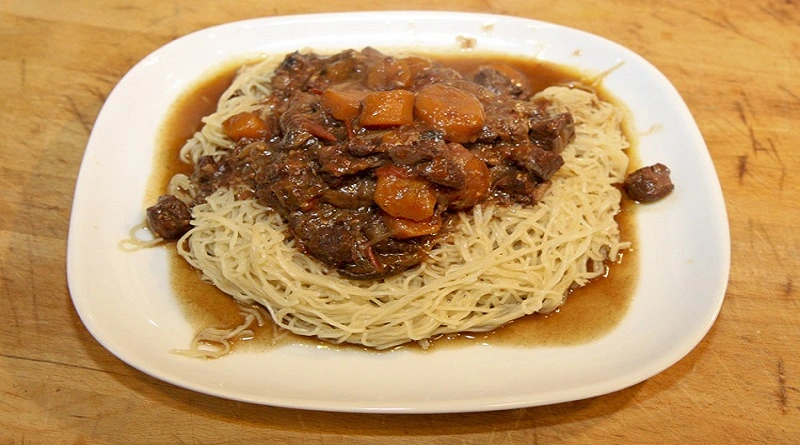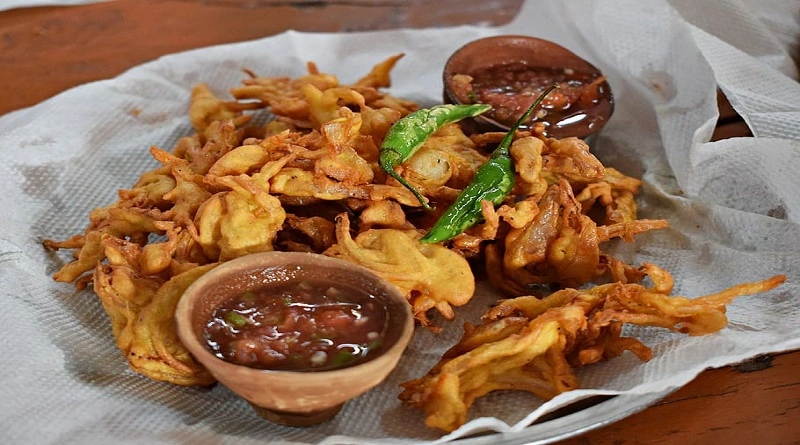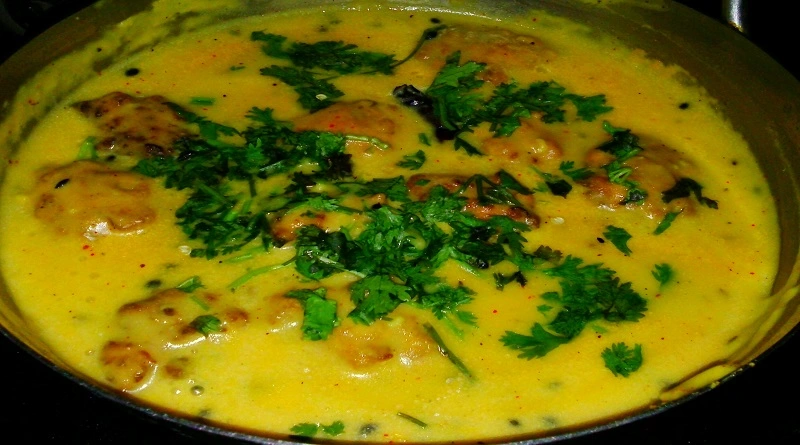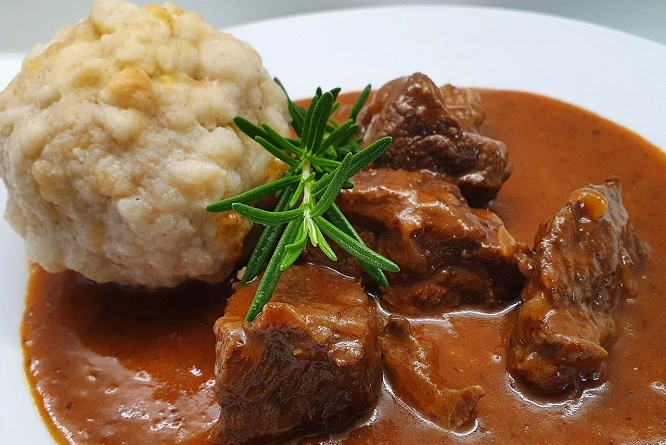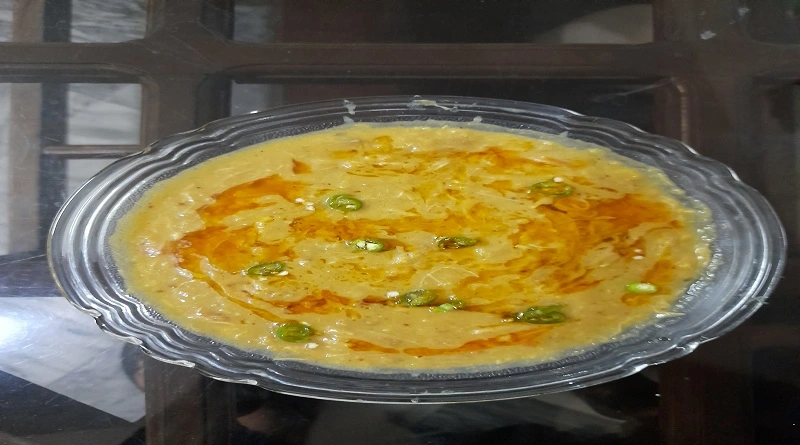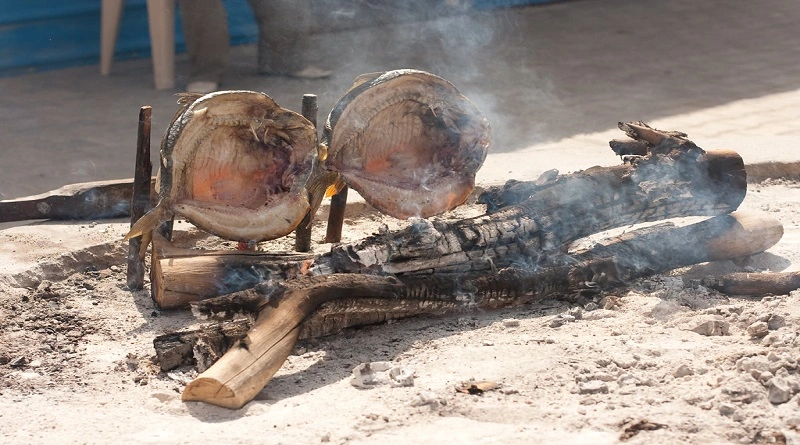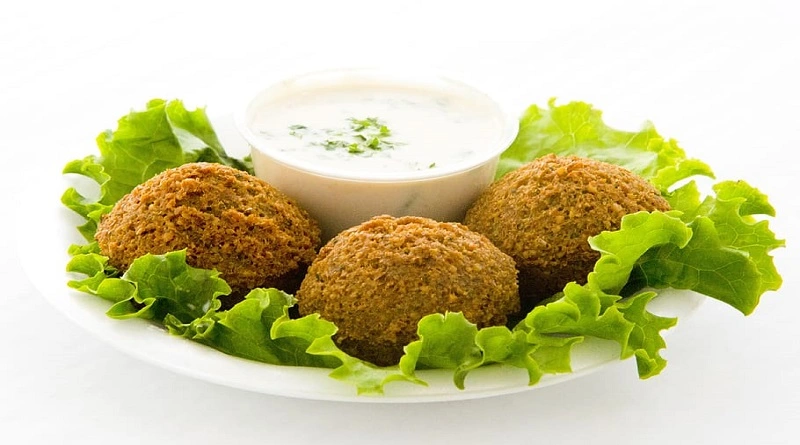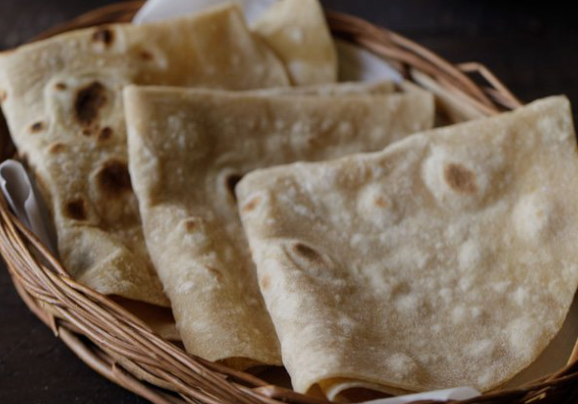Chicken Haleem has its roots in the Indian subcontinent, particularly in the city of Hyderabad in southern India. It is a stew made from lentils, wheat, and meat, usually chicken or beef. The dish is slow-cooked for several hours with a blend of spices to create a thick and creamy texture.
Introduction
Chicken Haleem’s popularity is a testament to its delicious flavor and cultural significance, making it a beloved dish among millions of people around the world. it is among the most liked dishes of the subcontinent like biryani, nihari, pulao, etc
Cultural Significance
The origins of Chicken Haleem can be traced back to the Mughal era in India when it was a dish primarily prepared for royal families. Over time, the dish gained popularity among the masses and spread to other parts of the Indian subcontinent, including Pakistan and Bangladesh.
In Hyderabad, Chicken Haleem is a significant part of the city’s culinary heritage and is especially popular during the month of Ramadan, where it is served as a staple food for breaking the fast. The dish is often served with a variety of garnishes, including fried onions, chopped coriander, and lime juice.
The cultural significance of Chicken Haleem lies in its ability to bring people together. The dish is often prepared in large quantities and shared among friends and family, strengthening the bonds between them. It is also a symbol of hospitality, as guests are often served Chicken Haleem as a welcoming gesture.
Expanding likelihood
In recent years, Chicken Haleem has gained popularity beyond South Asia, with many Indian and Pakistani restaurants around the world featuring it on their menus. Its rich flavor and hearty texture have made it a favorite among food enthusiasts and culinary experts alike.
In Hyderabad, where the dish originated, it is estimated that over 20,000 kg of Chicken Haleem is consumed daily during the month of Ramadan. The city is also known for hosting an annual Haleem festival, which attracts thousands of visitors from around the world.
According to a survey conducted by the food delivery app, Foodpanda, Chicken Haleem was among the top ten most-ordered dishes in Pakistan in 2019. The survey also found that the demand for haleem increased by 20% during the month of Ramadan.
Chicken Haleem has also gained popularity in other countries, with many Indian and Pakistani restaurants in the United States, United Kingdom, and the Middle East featuring it on their menus. In fact, according to a report by the BBC, Chicken Haleem is considered to be one of the top 50 foods in the world.
Quotes about Haleem:
- The combination of wheat, lentils, and meat in haleem is a perfect balance of nourishment and comfort.
- Haleem is not just a dish, it’s an emotion.
- The slow-cooked, creamy texture of haleem is like a warm hug for your taste buds.
- A bowl of haleem shared with loved ones is a feast for the soul
- A taste of haleem is like a journey through the rich culinary history of South Asia.
- In every spoonful of haleem, there is a story of tradition, culture, and community.
- Haleem is not just a food; it’s a work of art.
Types of Chikeen Haleem
Different types of Chicken Haleem vary in their preparation and ingredients depending on the region and the preferences of the cook. Here are a few examples:
- Hyderabadi Chicken Haleem: This is the original and most popular version of Chicken Haleem, originating from Hyderabad, India. It is made with a blend of lentils, wheat, and chicken that is slow-cooked for several hours with a variety of spices and ghee (clarified butter) to create a thick and creamy texture.
- Pakistani Haleem: In Pakistan, Chicken Haleem is typically made with a combination of lentils, wheat, and chicken, but may also include other meats such as beef or mutton (we have described another recipe for beef or mutton haleem. You may visit there for details). It is usually garnished with fried onions, chopped coriander and ginger, and lime juice.
- Bengali Chicken Haleem: In Bangladesh, Chicken Haleem is known as “Halim” and is made with a mixture of lentils, rice, and chicken or beef. It is often served with a side of paratha (flatbread) and sliced onions.
- Iranian Chicken Haleem: In Iran, Chicken Haleem is called “Haleem-e Morgh” and is made with a combination of wheat, chicken, and a variety of spices such as cinnamon, cardamom, and turmeric. It is typically served with bread and topped with fried onions and mint.
- Turkish Chicken Haleem: In Turkey, Chicken Haleem is called “Dövmeç” and is made with a combination of lentils, wheat, and chicken or beef. It is usually served with a side of yogurt and a sprinkle of paprika.
These are just a few examples of the different types of Chicken Haleem that exist. Each version has its unique flavor and texture, making it a delicious and satisfying dish for people all around the world.
Nutritional Facts of Chikeen Haleem
Chicken Haleem is a nutritious and filling dish that contains a variety of essential nutrients. Here are some of the nutritional facts for a serving of Chicken Haleem:
- Calories: A typical serving of Haleem (about 1 cup) contains approximately 350-400 calories.
- Protein: Chicken Haleem is a good source of protein, with a serving containing around 20-25 grams of protein, depending on the recipe and serving size.
- Carbohydrates: Chicken Haleem contains a moderate amount of carbohydrates, with a serving providing around 30-40 grams of carbs. The majority of the carbs come from the lentils and wheat used in the dish.
- Fiber: Haleem is a good source of dietary fiber, with a serving containing around 7-10 grams of fiber. The lentils and wheat used in the dish are high in fiber, which can help improve digestion and promote feelings of fullness.
- Fat: Chicken Haleem is typically made with ghee (clarified butter), which adds to the fat content of the dish. A serving of Haleem contains approximately 15-20 grams of fat, depending on the recipe and serving size.
- Vitamins and minerals: Chicken Haleem contains a variety of essential vitamins and minerals, including iron, calcium, vitamin B6, and vitamin C. The exact amount of each nutrient depends on the recipe and ingredients used.
Chicken Haleem can be a nutritious and satisfying dish when consumed in moderation as part of a balanced diet. It is a good source of protein, fiber, and essential vitamins and minerals, making it a popular choice among health-conscious individuals.
Health Benefits of Chicken Haleem
Chicken Haleem has several health benefits due to its nutritious ingredients and cooking process. Here are some of the health benefits of Chicken Haleem:
- Good source of protein: Chicken Haleem contains chicken, lentils, and wheat, all of which are good sources of protein. Protein is essential for building and repairing tissues, maintaining muscle mass, and regulating various functions in the body.
- High in fiber: The lentils and wheat used in Chicken Haleem are high in fiber, which can help improve digestion, regulate blood sugar levels, and promote feelings of fullness.
- Contains essential vitamins and minerals: Chicken Haleem contains essential vitamins and minerals such as iron, calcium, vitamin B6, and vitamin C. These nutrients are important for maintaining healthy bones, boosting immunity, and promoting healthy blood circulation.
- Low in cholesterol: Chicken Haleem is a low-cholesterol dish, which can help improve heart health and reduce the risk of heart disease.
- Slow-cooking process: Haleem is typically cooked slowly for several hours, which can help break down the ingredients and make them easier to digest. Slow cooking can also help retain the nutritional value of the ingredients.
- Can be customized: Chicken Haleem can be customized with different spices and ingredients to suit individual preferences and dietary restrictions. For example, it can be made gluten-free using alternative grains or omitting wheat altogether.
Haleem contains essential nutrients, is low in cholesterol, and can be customized to suit individual needs and preferences.
Recipe of Chicken Haleem
Chicken Haleem is a healthy and nutritious dish and should be made part of a balanced diet. Here we will discuss the easiest and most delicious recipe for Chicken Haleem.
Cooking Time Needed in Chikeen Haleem
The cooking time required to make Chicken Haleem can vary depending on the recipe and the quantity being prepared. However, as Chicken Haleem is typically slow-cooked, it usually takes 3-4 hours to prepare.
In general, the cooking process for Chicken Haleem involves first soaking the lentils and wheat for 2 hours, then cooking them with chicken and a variety of spices. The mixture is then blended or mashed to create a thick and creamy texture. Finally, it is topped with fried onions, chopped coriander, and lime juice before serving.
The actual cooking time for Chicken Haleem can range from 2-3 hours to up to 8-10 hours, depending on the desired texture and flavor. Also depends on using a pressure cooker or a slow cooker as it will change the cooking speed of the cooking process.
Overall, making Chicken Haleem requires patience and time, as the slow-cooking process is necessary to achieve the desired texture and flavor of the dish. However, the result is a delicious and hearty meal that is well worth the effort.
Ingredients Needed
Here are the ingredients needed to make Chicken Haleem for a serving of four people:
- 1/2 cup of wheat grains
- 1/2 cup of chana dal (split Bengal gram)
- 1/2 cup of moong dal (split mung beans)
- 1/2 cup of masoor dal (split red lentils)
- 1/2 Kg of boneless chicken, cut into small pieces of 3 to 4 cm (you may use Beef or Mutton in the same quantity)
- 2 medium-sized onions, sliced
- 1 tablespoon of ginger paste
- 1 tablespoon of garlic paste
- 2 medium-sized green chillies, chopped
- 1 tablespoon of red chili powder
- 1/2 tablespoon of turmeric powder
- 1/2 tablespoon of cumin powder
- 1/2 tablespoon of coriander powder
- Salt to taste (about 1 tablespoon)
- 1 liter of water
- 1/2 cup of ghee (clarified butter)
- 1 tablespoon of garam masala powder
- 1/2 cup of fried onions, for garnishing
- Chopped coriander leaves and lime wedges, for garnishing
Note: These are basic ingredients for Chicken Haleem, and the recipe can be customized with additional spices or lentils to suit individual preferences.
Utensils Required
Here are the utensils required to make Chicken Haleem:
- Large pot or pressure cooker: You will need a large pot or pressure cooker to cook the wheat and lentils with the chicken.
- Blender or hand-held mixer: After cooking the ingredients, you will need a blender or hand-held mixer to blend or mash them into a thick and creamy texture.
- Cutting board and knife: You will need a cutting board and knife to chop the onions, green chilies, and coriander leaves.
- Cooking spoon: To stir the ingredients while cooking.
- Frying pan: You will need a frying pan to fry the onions for garnishing.
- Serving bowls: You will need serving bowls to serve the Haleem.
Other utensils: You may also need other utensils such as measuring cups, spoons, and a strainer to prepare the ingredients. However, the utensils required for making Chicken Haleem are basic and commonly found in most kitchens.
Cooking Procedure of Chikeen haleem
Here is a step-by-step detailed cooking procedure for making Chicken Haleem:
Soaking:
Soak the wheat and lentils in water for at least 2-3 hours before cooking, as this will help them soften and cook faster. Then drain the water and set aside.
Cook the chicken(mutton or beef)
In a large pot or pressure cooker, heat 1/4 cup of oil or ghee. Then add sliced onions and sauté until golden brown (Note: take away little brown onion about 2 tablespoons and keep aside for garnishing purposes).
Add ginger and garlic paste along with other spices as mentioned in the ingredients (keep aside about 1/4 tablespoon of red Chile powder and mix spices powder as both will be needed for tempering the Haleem) and sauté for a minute.
Add boneless chicken and sauté until the chicken is changed its color and turned a little browned. If you are using boneless mutton or beef you have to add 1-2 cup of water and then cook for an additional time of 20-25 minutes as mutton and beef takes more time than chicken to become lean.
Cook the wheat and lentils
Add the soaked wheat and lentils to the pot with the chicken. Add 1 liter of water and stir well. Cover the pot and let it cook on low heat for 2-3 hours or until the wheat and lentils are cooked and have become soft and mushy. If the water is being dried to a dense mixture you may add some more water as admissible.
Note: If you are using a pressure cooker then reduce the water quantity also the cooking time to 1 to 1.5 hours as the pressure cooker speeds up the cooking process.
Blend the mixture
Once the wheat and lentils are cooked, use a blender or hand-held mixer to blend the mixture until it becomes a thick and creamy texture.
Note if the mixture is too sticky you may need to add more water to achieve the desired consistency and if the mixture is too thin you may cook for a little more.
Temper the Haleem
In a frying pan, heat 1/4 cup of ghee. Add 1/4 Tablespoon of red chili and mix spices powder as kept under cooking wheat and lentils step and fry for a few seconds. Add this heated oil to the blended wheat and lentil mixture and stir well. Cook on low heat for another 08-12 minutes, stirring occasionally.
Garnish
Once the Chicken Haleem is cooked, transfer it to serving bowls. Garnish with fried onions, chopped coriander leaves, and lime wedges. Serve hot with naan or roti.
Note: The cooking time for Chicken Haleem may vary depending on the recipe and quantity being prepared. It is important to stir the ingredients regularly while cooking to prevent them from sticking to the bottom of the pot. Also, the recipe can be adjusted to suit individual preferences by adding more or less spices, lentils, or meat.
Cooking Precautions
Here are some cooking precautions to keep in mind while making Chicken Haleem:
Soaking: Soak the wheat and lentils for at least 2-3 hours before cooking to ensure that they cook properly and quickly. Some varieties of lentils may need more soaking time you may adjust that accordingly.
Stirring: Stir the ingredients regularly while cooking to prevent them from sticking to the bottom of the pot.
Blending: When blending the mixture, be careful and do it properly so that haleem may become a gummy appearance.
Tempering: Be careful when adding the ghee or oil for tempering as it may splatter and cause burns.
Spices: Adjust the number of spices according to personal preferences. Too much spice may make the haleem too spicy, while too little may make it bland.
Chicken cooking: Ensure the chicken is cooked properly before adding it to the wheat and lentils. Undercooked meat can cause food poisoning.
Hygiene: Maintain proper hygiene and cleanliness in the kitchen while preparing the haleem. Wash your hands and utensils thoroughly before cooking.
By following these precautions, you can ensure that the Haleem is cooked properly and is safe to consume.
Common Mistakes in Cooking
Here are some common mistakes that people make while cooking Chicken Haleem:
Not soaking the wheat and lentils long enough: Not soaking the wheat and lentils for at least 2-3 hours can result in them not cooking properly.
Overcooking or undercooking the wheat and lentils: Overcooking can make the haleem lumpy and difficult to blend while undercooking can make it too thin.
Adding too much or too little water: Adding too much water can make the haleem too thin while adding too little water can make it too thick and difficult to blend.
Not stirring the ingredients regularly: Not stirring the ingredients can cause them to stick to the bottom of the pot and burn.
Using the wrong type of chicken: try to use legs boneless chicken as chicken breast, which can result in the meat becoming dry and tough.
Not tempering the haleem properly: Not adding the right amount of ghee or oil while tempering can result in the haleem being too dry or too oily.
Not adjusting the spices according to personal preferences: Not adding the right amount of spices can result in the haleem being too spicy or too bland.
By avoiding these common mistakes, you can ensure that the Chicken Haleem turns out delicious and flavorful.
Serving Instructions
Here are some serving instructions for Chicken Haleem:
Garnish: Garnish the Haleem with fried onions, fresh coriander leaves, mint leaves, and a squeeze of lemon juice.
Accompaniments: Serve the Haleem hot with naan bread or roti, and a side of raita or salad.
Portion size: Serve the Haleem in individual bowls or plates, with a portion size of about 1-1.5 cups per person.
Temperature: Serve the Haleem hot and fresh, as it tends to thicken as it cools down.
Leftovers: Haleem can be stored in an airtight container in the refrigerator for up to 3-4 days. Reheat in a microwave or on a stovetop before serving.
By following these serving instructions, you can enjoy the delicious flavors and aroma of Haleem with your family and friends.
Side Effects of Chikeen Haleem
There are no major side effects of consuming Haleem, as it is a nutritious and healthy dish. However, some people may experience minor side effects due to certain ingredients or spices used in the recipe.
Here are some possible side effects of Haleem:
- Flatulence: Consuming large amounts of lentils and beans, which are used in Haleem, can cause gas and flatulence.
- Allergic reactions: Some people may be allergic to certain ingredients used in Haleem, such as wheat, lentils, or nuts.
- Digestive problems: Spices used in Chicken Haleem, such as ginger, garlic, and cumin, can cause digestive problems in some people if consumed in excess.
- High-calorie content: it is a high-calorie and high-fat dish due to the use of meat and ghee or oil. Overconsumption can lead to weight gain and other health problems.
It is always advisable to consume Haleem in moderation and consult a doctor if you have any dietary restrictions or health concerns.
Conclusion
In conclusion, Chicken Haleem is a popular and nutritious dish in South Asia, especially during the holy month of Ramadan. It is made with a blend of wheat, lentils, chicken, and spices, which are slow-cooked to create a thick and creamy texture. Haleem is not only delicious but also provides several health benefits due to its high protein and fiber content.
Frequently Asked Questions
Is Chicken Haleem healthy?
Yes, it is a healthy dish as it is high in protein, fiber, and essential nutrients. However, it is also high in calories and fat due to the use of meat and ghee or oil, so it should be consumed in moderation.
Can Chicken Haleem be frozen?
Yes, it can be frozen for up to 2-3 months. Allow the haleem to cool down completely, then transfer it to an airtight container and freeze. Thaw the haleem in the refrigerator overnight and reheat before serving.
Can Chicken Haleem be made vegetarian?
Yes, it can be made vegetarian by omitting the chicken and using vegetable stock instead of chicken stock. Additional vegetables such as carrots and peas can also be added to enhance the flavor and nutrition.
What is the difference between Chicken Haleem and Beef Haleem?
The main difference between these Haleem and Beef Haleem is the meat used in the recipe. Chicken Haleem is made with chicken, while Beef Haleem is made with beef. The cooking method and other ingredients remain the same.
Can Chicken Haleem be made in a pressure cooker?
Yes, it can be made in a pressure cooker for a quicker cooking time. However, it may not have the same texture and flavor as the traditional slow-cooked haleem.
References
“A Culinary Journey for the Love of Biryani and Haleem” by Pratibha Karan
“The Food of India: A Journey for Food Lovers” by Priya

